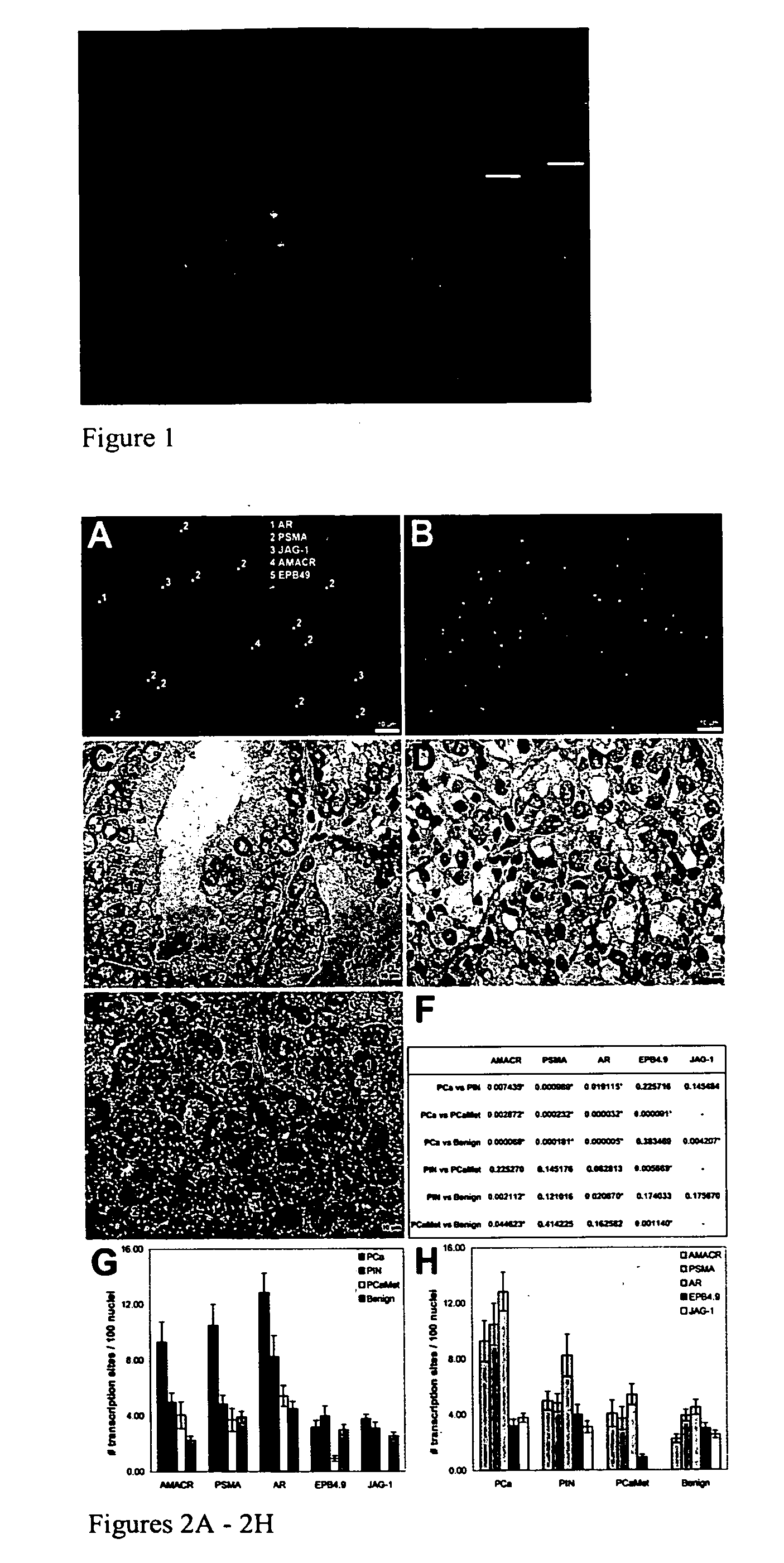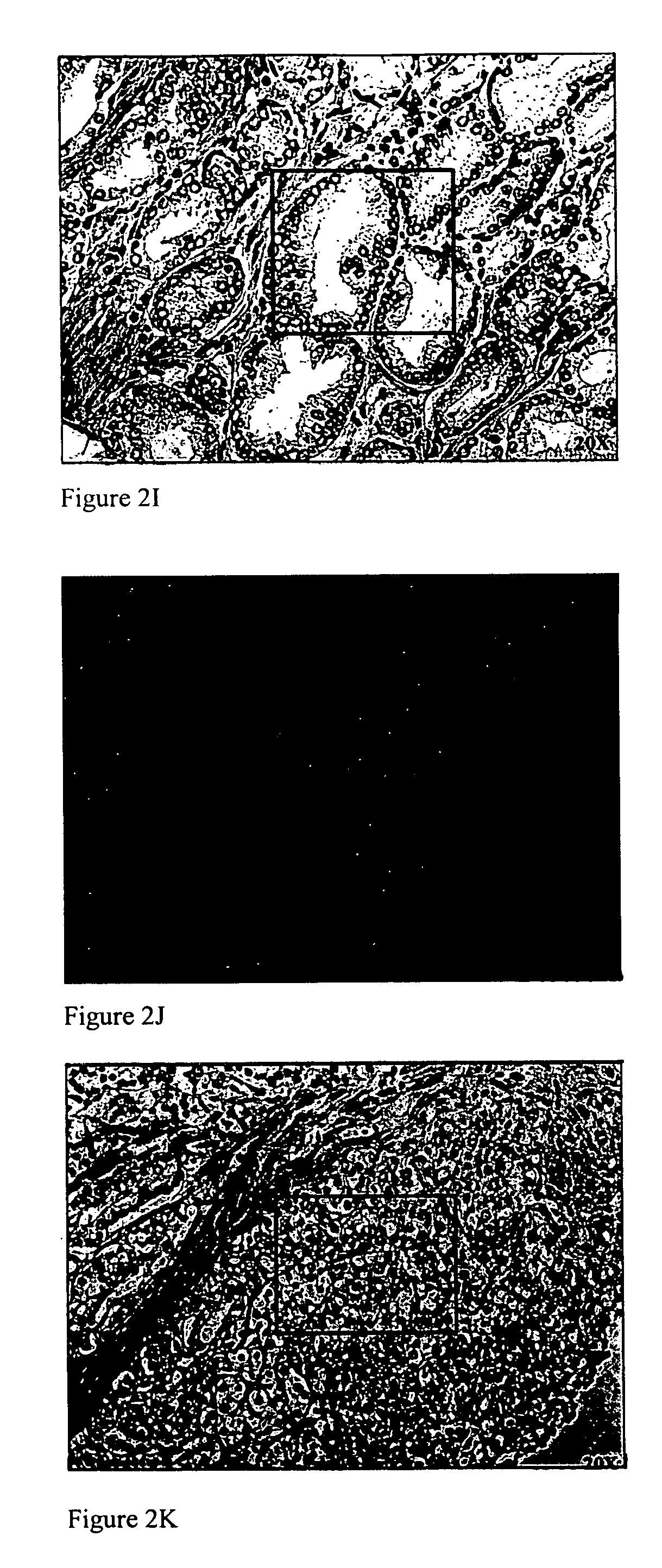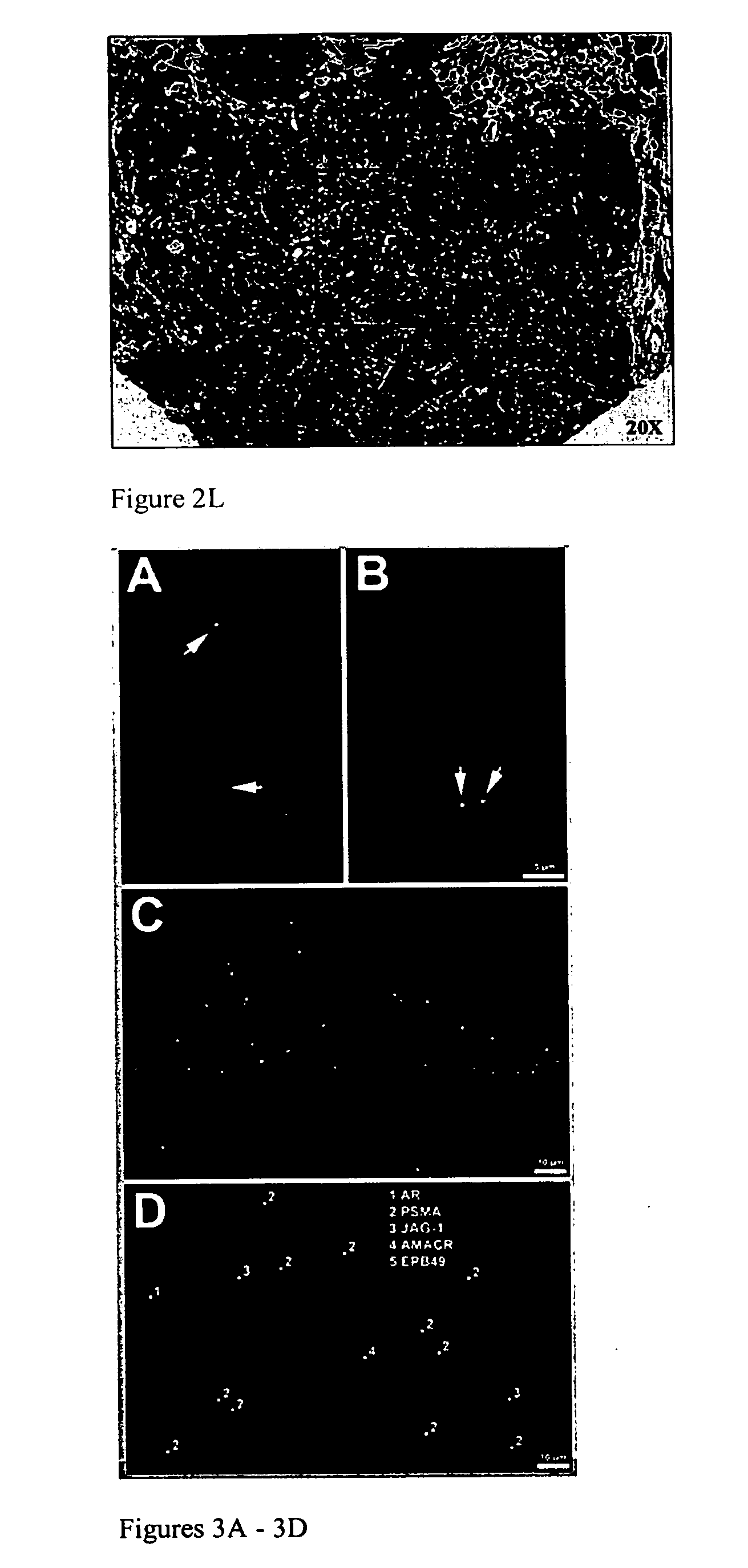Diagnostic histopathology using multiplex gene expression FISH
a histopathology and gene expression technology, applied in the field of diagnostic histopathology using multiplex gene expression fish, can solve the problem that the method was formally not compatible with fixed treated cell lines or tissues, and achieve the effect of high probability of turning cancerous
- Summary
- Abstract
- Description
- Claims
- Application Information
AI Technical Summary
Benefits of technology
Problems solved by technology
Method used
Image
Examples
example 1
Material and Methods
Samples
[0140] Microarrays (TMA) consisting of 0.6 mm core biopsies of formalin-fixed, paraffin-embedded tissues were created using a tissue arrayer (Beecher Instrument). Cohorts of 59 anonymized prostate samples present in the TMA in triplicate were analyzed. Of the 59 patients, 20 were prostate adenocarcinoma (PCa), 12 were benign prostatic hyperplasia (BPH), 13 were prostatic intraepithelial neoplasia (PIN), 14 were prostate metastasis (PCaMet).
Sample Preparation—Pretreatment
[0141] 5 μm paraffin-embedded sections were dried at 37° C. for about 1 hour and then transferred to a decloaker chamber for 30 minutes where they were deparaffinized and antigen-retrieved using a solution that allows both steps to occur at the same time. The slides were then washed in PBS for 10 minutes, incubated for 20 minutes in 0.25% ammonia-ethanol at room temperature (RT), and then incubated for 50 minutes in 5% sodium borohydride in PBS at RT. The slides were then washed twice...
example 2
Patient Analysis by Microarray
[0157] To investigate how peT-FISH data correlate with histopathologic features, epithelial cells with established pathologic morphologies: benign prostate tissue, prostatic intraepithelial neoplasia (PIN), prostate cancer (PCa) and prostate cancer metastasis (PCaMet, Glinsky G., et al. J Clin. Invest. 113, 913-923 (2004)) was examined. peT-FISH was performed on ‘de-stained’ hematoxylin and eosin (H&E) tissue sections (FIG. 3). The ability to use destained section is an important capability because in many cases, patient tissue blocks are no longer available for analysis. The panels show overlays of peT-FISH results on morphology image data. The procedure was modified for high-throughput sampling of patient material in TMA format (Capodieci P., et al. J Natl Cancer Inst. 96, (2004)).
[0158] Random fields were chosen from each individual from tissue microarray (TMA) blocks representing tissue samples derived from patients that had undergone therapeutic ...
example 3
Analysis of Tissue Sections
[0160] We have determined that the resolution provided by current microscopes is sufficient for detecting the expression of up to 40,000 transcription sites in a cell simultaneously. Our reasoning is as follows. The nucleus is approximately 10 μm in diameter which corresponds to a volume of approximately 500 μm3 (V= 4 / 3(πr2)). A voxel is approximate 0.1 μm by 0.1 μm by 0.25 μm or 2.5×10−3 μm3. Thus, there are 200,000 voxels per nucleus which corresponds to a detection ability of about 40,000 transcription sites. Approximately 10,000 genes are expected to be transcribed in a nucleus simultaneous. Thus, the microscopic technique of the invention is capable of detecting all the expressed genes in a cell at the same time.
[0161] Our experimental strategy is based on detection of nascent RNA. Nascent RNAs are RNAs that are being transcribed from genomic DNA (i.e., chromosome). Since the RNAs are still being transcribed, they are associated with their correspon...
PUM
| Property | Measurement | Unit |
|---|---|---|
| temperature | aaaaa | aaaaa |
| temperature | aaaaa | aaaaa |
| diameter | aaaaa | aaaaa |
Abstract
Description
Claims
Application Information
 Login to View More
Login to View More - R&D
- Intellectual Property
- Life Sciences
- Materials
- Tech Scout
- Unparalleled Data Quality
- Higher Quality Content
- 60% Fewer Hallucinations
Browse by: Latest US Patents, China's latest patents, Technical Efficacy Thesaurus, Application Domain, Technology Topic, Popular Technical Reports.
© 2025 PatSnap. All rights reserved.Legal|Privacy policy|Modern Slavery Act Transparency Statement|Sitemap|About US| Contact US: help@patsnap.com



